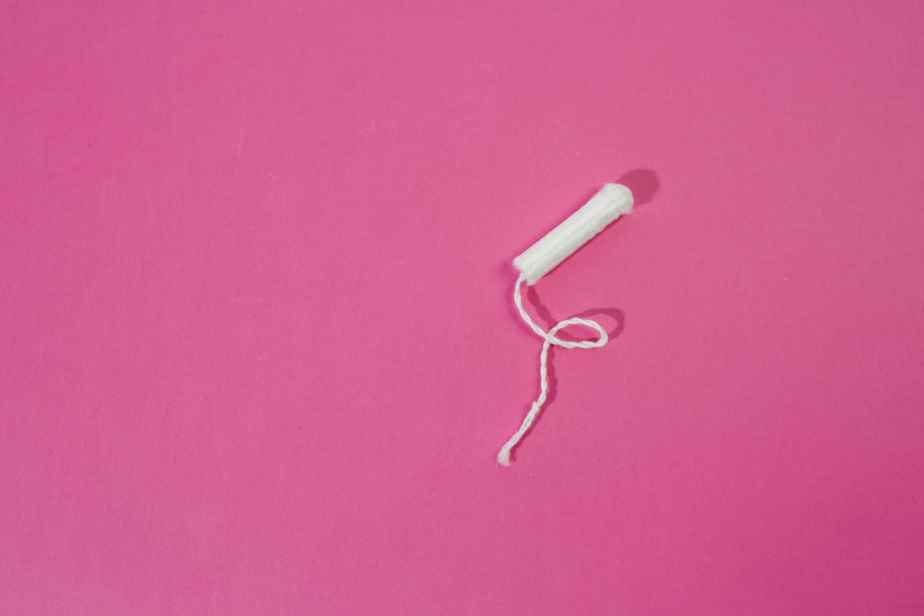Posted yesterday at 4:00 p.m.
In their election platforms, three of the main provincial parties pledge to facilitate access to menstrual products. The Parti Québécois wishes to make them available “to anyone who needs them” in schools and organizations. The Liberal Party of Quebec, “on all campuses”, and Québec solidaire promises the free use of all products, “reusable or not”.
Nothing like this appears on the Coalition avenir Québec’s electoral platform, but the media relations team ensures that, during a possible next mandate, the CAQ government will “continue efforts towards greater access [aux] menstrual products”.
Free menstrual products is not a new concept. For about seven years, and especially in the last two years, people have been mobilizing to facilitate access to these basic necessities.
“When we look abroad, we realize that this is at work in quite a few countries,” observes Élise Brunot, project manager for Le Fil rouge, a campaign of the Quebec Action Network for health of women (RQASF) dedicated to menstrual precariousness. “Awareness is starting to be really global. »
1/5
One in five menstruating people in Quebec have already used alternative means (toilet paper, cloth) to protect themselves because of the price of menstrual products.
Source : Portrait of the experience of menstruation in QuebecRQASF
Scotland forerunner
The territory that goes the furthest to democratize access to menstrual products is unquestionably Scotland. Since the summer, and following a law approved by Parliament in 2020, the 32 Scottish councils (local authorities) have been required to provide free access to tampons and pads to “everyone who needs them”. “.
Kenya also remains a pioneer in this area: menstrual products have been zero-rated since 2004 (which happened in 2015 only in Canada) and the country has been offering pads to its students since 2017. South Korea also provides access to towels in its public places, while France, New Zealand and several American states distribute them in schools.
In Canada, British Columbia has been offering free menstrual products to students since 2019. Nova Scotia, Prince Edward Island, Ontario and Manitoba (most recently) have followed suit.
25 millions
In the 2022 federal budget, the government is providing $25 million over two years to set up a pilot project to make these products available to people who are struggling to afford them.
In Quebec, are we behind?
“Compared to British Columbia, yes,” replies Élise Brunot, surprised that even France made decisions before Quebec. Nevertheless, she said, the case is moving forward. ” Here we are. »

PHOTO PATRICK SANFAÇON, THE PRESS
Élise Brunot, project manager for Le Fil rouge
It moves
In its new strategy for equality between men and women (2022-2027), the Secretariat for the Status of Women has set itself the objective of “facilitating access to disposable and reusable menstrual products”, by carrying “a special attention to young girls, students, women and people in precarious situations”. It should be noted that in Quebec, it was the independent deputy Catherine Fournier (now mayoress of Longueuil) who brought the file by presenting a motion to the National Assembly in December 2020, a motion adopted unanimously.
-

PHOTO PATRICK SANFAÇON, THE PRESS
Washable towels
-

PHOTO PATRICK SANFAÇON, THE PRESS
Various menstrual cups exist on the market.
1/2
Recently, the City of Montreal conducted a pilot project to distribute free products in municipal buildings. Finally, since 2020, many municipalities in Quebec have offered subsidies for the purchase of durable products, such as washable pads and menstrual cups, but the funds are limited and “run out quickly,” notes Élise Brunot.
The lack of access to menstrual products can have an impact on the education and work of girls and women, underlines Élise Brunot. “In fact, it participates in a withdrawal from public space during this period, which comes back every month,” she said. “And by making these menstrual products visible and free, we are simply sending the message to the entire population that menstruation is normal, that it is not a taboo,” she believes.
$6000
Average cost of menstrual products in Canada over a lifetime.
Source: National Union of Public and General Employees, 2022

